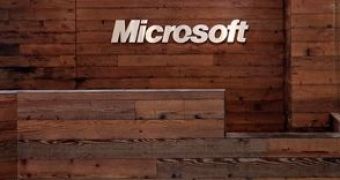Microsoft unveiled what it calls a digital salute to U.S. veterans on November 11, 2011, a date which coincides with Veterans Day.
The new “Wall of Honor” at the company’s Redmond headquarters is designed to highlight some of the software giant’s employees that also served in the U.S. military, explained Scott Pitasky, corporate vice president, Human Resources Talent & Organization Capability Group, Microsoft.
According to Pitasky, it was Microsoft Chief Executive Officer Steve Ballmer who unveiled the “Wall of Honor.”
“Our goal today is to recognize the contribution of Microsoft employees who served in the military or continue to serve in the military. Some are deployed today, and our thoughts are with them and their families for their safe return,” Ballmer revealed.
Placed near Microsoft’s section of the Berlin Wall in Building 33, the new “Wall of Honor” is a tribute which complements the software giant’s efforts dedicated to making it easier for former members of the U.S. military to reboot their civilian lives.
For example, Microsoft operates the WeStillServe.com website, helping veterans find civilian jobs, and earlier this week, the company announced an expansion of its Elevate America veterans initiative.
Through the Elevate America veterans initiative, Microsoft is working to provide technology skills and certification “packages” for veterans as well as their spouses.
“The salute is a “living” digital display featuring alternating photographs and stories about Microsoft employees currently serving in the military and those who have served in the past,” Pitasky said.
“The display is flanked on each side by shelves holding helmets, patches and other military artifacts on loan from employees as well as the company’s prestigious Freedom Award, the highest award the military gives to industry for supporting its members.”
The “Wall of Honor” is one of the results of a collaboration involving Microsoft and the Military Employee Networking Group, according to Pitasky.

 14 DAY TRIAL //
14 DAY TRIAL //